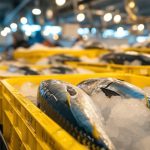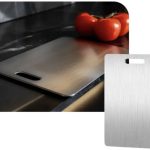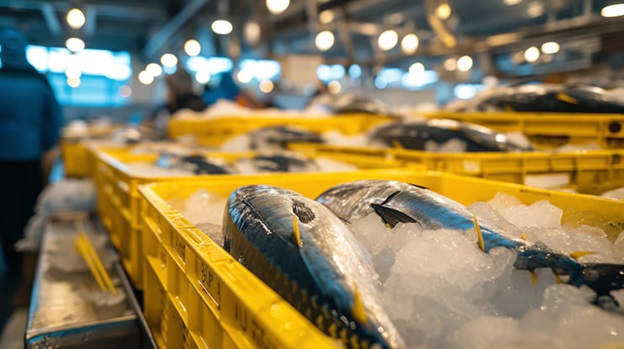Fish and seafood products are highly perishable, making their proper handling and storage essential for maintaining both their freshness and safety.
Walk-in cold rooms play a critical role in ensuring that fish products are kept at the right temperature from the moment they are caught or harvested until they are consumed.
This article explores the function of cold rooms in preserving fish products and their role in maintaining food safety, quality, and shelf life.
The Importance of Temperature Control
Fish is an excellent source of nutrition, but due to its high moisture content and sensitive nature, it is extremely prone to spoilage if not stored properly. The key to preserving the freshness of fish is controlling the temperature. Fish and other seafood should be stored at temperatures between 0°C to 4°C (32°F to 39°F) to slow down the growth of harmful bacteria and prevent spoilage. Cold rooms, which are specialized refrigeration systems, are designed to maintain these optimal temperatures, ensuring that fish products stay fresh for longer periods.
The primary risk factors for spoilage in fish include bacterial growth, enzymatic degradation, and oxidation. When the fish is exposed to higher temperatures, these processes accelerate, leading to a shorter shelf life and, in some cases, the growth of harmful pathogens such as Listeria, Salmonella, and Vibrio. Cold rooms counteract these risks by providing a controlled environment where the temperature remains consistent, thus preserving the fish’s quality.
How Cold Rooms Function
Cold rooms are large, insulated spaces that are specifically designed for storing perishable goods at controlled temperatures. They are equipped with refrigeration units that circulate cold air to maintain the desired temperature range. There are several types of fish cold rooms used in the fish industry, including blast freezers, chilled storage rooms, and walk-in refrigerators.
- Blast Freezers: These are used for rapidly freezing fish after they are caught to lock in freshness. By freezing fish at extremely low temperatures very quickly, the blast freezer minimizes the formation of ice crystals, which helps to preserve the texture and flavor of the fish. Frozen fish can then be stored in cold rooms at sub-zero temperatures until ready for sale.
- Chilled Storage Rooms: These cold rooms are used for storing fresh fish at temperatures just above freezing, typically between 0°C and 4°C. The refrigeration units in these rooms maintain a steady temperature to keep fish products cold but not frozen, which is crucial for fish that are to be sold fresh rather than frozen.
- Walk-In Refrigerators: These are commonly found in fish processing plants, fish markets, and seafood distribution centers. Walk-in refrigerators offer easy access to stored fish products, allowing workers to quickly retrieve and handle items while maintaining a cold temperature.
The Role of Cold Rooms in Maintaining Freshness
The main role of cold rooms in fish storage is to maintain the cold chain from the moment the fish is harvested to when it reaches the consumer. The “cold chain” refers to the process of keeping food products at the required temperature throughout every stage of the supply chain, from harvesting to processing, storage, transportation, and retail. A break in the cold chain—whether due to improper refrigeration or inadequate temperature monitoring—can lead to the rapid deterioration of fish quality and safety.
Fish is particularly sensitive to temperature fluctuations. If the temperature is too high, bacterial growth will increase, causing the fish to spoil quickly. On the other hand, if fish is kept at too low a temperature for too long, it may suffer from freezer burn or dehydration, which can degrade the taste and texture. Cold rooms maintain the delicate balance necessary to preserve both the safety and quality of the fish.
Preventing Cross-Contamination
One of the most significant benefits of cold rooms in the fish industry is their ability to reduce the risk of cross-contamination. Fish is a highly susceptible food product, meaning it can easily become contaminated by pathogens from other food items or surfaces. By storing fish in dedicated cold rooms that are kept clean and hygienic, the risk of contamination is minimized.
Moreover, cold rooms are often equipped with advanced features like air circulation systems that help maintain an even temperature throughout the space. This not only helps in preserving the fish’s freshness but also reduces the risk of microbial growth due to temperature fluctuations. Additionally, some cold rooms include humidity control systems that can help maintain the appropriate moisture level, further reducing the likelihood of spoilage.
Enhancing Safety and Compliance with Regulations
Cold rooms also play a vital role in ensuring that fish products comply with food safety regulations. Government agencies around the world, including the U.S. Food and Drug Administration (FDA) and the European Food Safety Authority (EFSA), set strict guidelines for the storage and handling of fish and seafood products.
In addition to temperature control, cold rooms are often monitored with temperature sensors and alarm systems that alert staff to any deviations from the preset conditions. This allows for quick corrective action to be taken if the cold room’s temperature rises above the recommended range, preventing any risk to the fish.
The Role of Cold Rooms in Sustainability
Sustainability is an increasing concern in the food industry, and cold rooms are essential in helping the fish sector minimize waste. By slowing down the spoilage process, cold rooms extend the shelf life of fish products, reducing the amount of fish that must be discarded due to spoilage. Furthermore, by efficiently managing the temperature and humidity, cold rooms contribute to a more sustainable approach to seafood distribution, reducing the overall environmental impact of food waste.













